

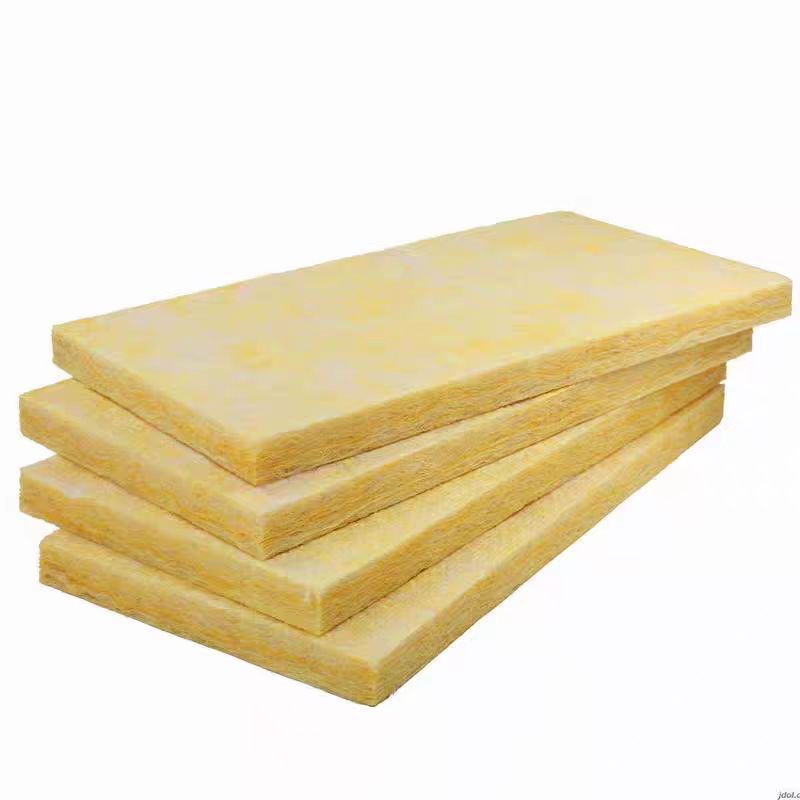
03 2025
Analysis of Thermal Insulation Quality of Aluminum Foil Glass Wool for Air Duct and Its Control Measures
Abstract
In the construction of ventilation and air conditioning engineering, air ducts such as fresh air systems, air conditioning systems, and smoke exhaust systems are often insulated with aluminum foil centrifugal glass wool boards. Aluminum foil glass wool boards are insulated on iron sheet air ducts and need to be fixed with insulation nails. The common use of aluminum foil glass wool board for insulation on iron sheet air ducts is prone to insulation cotton peeling, aluminum foil surface layer damage, and glass wool falling off. The qualified rate of aluminum foil glass wool board insulation for air ducts is not high, causing the temperature in the room to not meet the standard, increasing energy loss, not only increasing operating costs, but also spreading glass wool fibers, which poses a threat to personnel’s health. Based on specific projects, analyze the causes of quality problems and the corresponding targeted measures needed.
Keywords
aluminum foil; glass wool; board; insulation
1 Project Overview
The construction project of the teaching and research building on the new campus of Minzu University of China is located in Qinglong Lake area of Wangzuo Town, Fengtai District. The project is the first phase project of Minzu University of China, which is divided into the main building and the auxiliary buildings. The main building is divided into three parts of ABC, the middle main building A, the east and west, and the distribution building B and C. The project has 2 underground floors and 4 above ground floors (3 local floors), with a total construction area of 23800m2 (as shown in Figure 1). The air conditioning system of this project is a fresh air + fan coil system, using δ = 30mm thick aluminum foil centrifugal glass wool board [1] for thermal insulation, with a thermal insulation area of 8891.2 square meters; the smoke prevention and exhaust system uses δ = 50mm thick aluminum foil centrifugal glass wool board for thermal insulation, with a thermal insulation area of 2108.8 square meters (as shown in Table 1).
The construction project of the social science group teaching building and public teaching building on the new campus of Minzu University of China is the second phase of the project of Minzu University of China, which is divided into two buildings: the social science group teaching building and the public teaching building. The total construction area is 37582m2. The air conditioning system of this project is also a fresh air + fan coil system, and the centrifugal glass wool board with δ = 30mm thick aluminum foil is also used for thermal insulation. The thermal insulation area is 26012m2.
Figure 1 Air conditioning and ventilation floor plan for the construction project of teaching and research building on the new campus of Minzu University of China
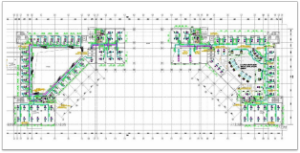
Table 1 Overview of ventilation and air conditioning, professional air duct glass wool insulation capacity for the construction of teaching and research buildings on the new campus of Minzu University of China
| name | West Annex Building Section A | Section C of the main building | Section B of East Annex Building | total |
| Fan coil system | δ=30mm 1363m2 | δ=30mm 1303.8m2 | δ=30mm 1230.2m2 | 3897m2 |
| Fresh air system | δ=30mm 1584.4m2 | δ=30mm 1676.6m2 | δ=30mm 1733.2m2 | 4994.2m2 |
| Smoke prevention and exhaust system | δ=50mm 712.6m2 | δ=50mm 669.6m2 | δ=50mm 726.6m2 | 2108.8m2 |
| total | 3660m2 | 3650m2 | 3690m2 | 11000m2 |
2 Common thermal insulation quality problems of air duct aluminum foil glass wool board
2.1 Poor insulation quality, easy to form condensation
The air supply temperature of the air disc is designed to be lower than the dew point temperature. If the thermal insulation quality is poor, it is easy to condense outside the air duct with poor thermal insulation quality in summer to form condensate. Condensation temperature, as shown in Figure 2.
Figure 2 Schematic diagram of condensation temperature
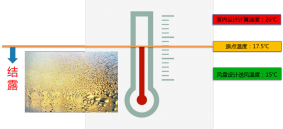
2.2 Poor thermal insulation quality can easily affect the cooling and heating effect. The thermal resistance of aluminum foil glass wool board is 78,200 times that of the air duct. Therefore, if the thermal insulation quality is not good, the air duct in the ceiling will lose a lot of cooling capacity and heat, which will affect the cooling and heating effect in the room. On-site galvanized steel plate air duct installation aluminum foil glass wool board insulation, air duct insulation, cotton is easy to fall off, the shape of air duct insulation is uneven, and there is condensation on the surface of the air duct. These are common problems of thermal insulation quality. Causing increased energy loss [2], the temperature of the air-conditioned room reaches the design requirements, which is not enough to meet the design requirements, and the operating cost is constantly increasing. At the same time, the spread of aluminum foil glass cotton silk endangers the normal operation of the system and Aluminum foil glass, cotton board insulation and heat transfer as shown in Figure 3.
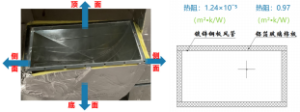
Figure 3 Schematic diagram of thermal insulation and heat transfer of aluminum foil glass wool board
3. Analysis of the causes of quality problems
3.1 Through the current situation investigation
By consulting the information, consult the supervisor, manufacturer and on-site construction personnel.
Random inspection of 500 places on site to randomly check the overall thermal insulation situation, as shown in Table 2. Table 2 Air duct aluminum foil thermal insulation questionnaire
| location | number of spot checks | qualified number | pass rate |
| Section A 2nd Floor | 125 | 105 | 84.0% |
| Section B 2nd Floor | 125 | 103 | 82.4% |
| Section B 3rd Floor | 125 | 103 | 82.4% |
| Section C 4th Floor | 125 | 104 | 83.2% |
| Total/average | 500 | 415 | 83.0% |
Through on-site random inspection of 500 points in 4 places of the project, the thermal insulation situation was investigated. There were 85 unqualified points and 415 qualified points, and the pass rate was only 83%. The pass rate is low and more rework is required.
Further investigation is carried out on the unqualified places of thermal insulation, from the number (density) of thermal insulation nail pasting, the uniformity of thermal insulation nail pasting, whether there is a lack of legends and diagrams in the technical disclosure of the team, whether the workers can intuitively understand the thermal insulation process, the splicing of thermal insulation materials, the bonding firmness, whether the finished product protection measures are perfect, the thermal insulation material and the outside of the air duct, the surface bonding degree, and the cross-operation in a narrow space. Sampling and analysis are carried out on the impact of thermal insulation. The main problems of aluminum foil glass wool thermal insulation for rectangular air duct are shown in Table 3.
Table 3 Main problems of aluminum foil glass wool insulation for rectangular air duct
| serial number | Main problem |
| 1 | The installation density of thermal insulation nails is not enough, and the pasting of thermal insulation nails is uneven |
| 2 | The team’s technical disclosure lacks legends and diagrams, and workers cannot intuitively understand them |
| 3 | The joint bonding of thermal insulation materials is not strong |
| 4 | The finished product protection measures are not perfect |
| 5 | The problem of insufficient surface engagement of the air duct |
| 6 | Narrow space and cross-operation. There is not enough space for insulation. |
3.2 Findings of the investigation
① The installation density of thermal insulation nails is not enough, and the pasting of thermal insulation nails is uneven. Have
The statistics of the number of insulation nails at the bottom of the air duct are shown in Table 4.
Table 4 Statistical table of the number of thermal insulation nails at the bottom of the air duct
| serial number | location | Pipe diameter mm, pipe length m | area
2 m |
Number of sticky nails (pcs) | Specification requirements (10m2) ) | percentage % |
| 1 | Section A 02 | 400 x 200 tubes, L = 25 | 10 | 125 | ≥ 160 | 78.10 |
| 2 | Section B 01 | 1000×320管, L=10 | 10 | 144 | ≥ 160 | 90.00 |
| 3 | Section B 02 | 800 × 320 tube, L = 12.5 | 10 | 153 | ≥ 160 | 95.60 |
| 4 | Section C 02 | 630 x 200 tubes, L = 16 | 10 | 141 | ≥ 160 | 88.13 |
| 5 | Section C 03 | 500 x 200 tubes, L = 20 | 10 | 137 | ≥ 160 | 85.63 |
| 6 | average | 140 | 87.50 |
The number of sticky nails at the 5 places checked did not meet the specification requirements, with an average of 87.5% of the specification. As can be seen from the combination diagram (as shown in Figure 4), the number of sticky nails and sticky nails at the 5 places sampled was uneven, and the difference fluctuated greatly. Through the comparison test, 100 points were randomly checked for the 5 sticky nail air ducts, the number of uniform points and the number of flat points on the complete surface were checked, and the spacing statistics of thermal insulation nails were carried out at 50 points (as shown in Table 5). Figure 4 Combination diagram of the number of thermal insulation nails at the bottom of the sticky nail air duct
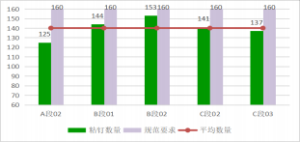
Table 5 Statistical table of the number of uniform points of the sticky nail air duct and the number of flat points of the finished surface Check the statistical table
| name | Check points | average point | pass rate | Finish surface leveling points | pass rate |
| Section A 02 | 20 | 9 | 45% | 10 | 50% |
| Section B 01 | 20 | 12 | 60% | 7 | 35% |
| Section B 02 | 20 | 12 | 60% | 8 | 40% |
| Section C 02 | 20 | 11 | 55% | 12 | 60% |
| Section C 03 | 20 | 10 | 50% | 9 | 45% |
| average | 100 | 54 | 54% | 46 | 46% |
Through on-site forensics, check the number of thermal insulation nails per unit area of thermal insulation nails by ruler, some air duct thermal insulation cotton thermal insulation nails are not enough and do not meet the specification requirements. Through the statistics of the problem that the first line of thermal insulation nails is more than 120mm away from the edge of the air duct, 48.6% do not meet the specification requirements. It can be seen from Table 6 and Figure 5 that the sticking nails have a large degree of discrete spacing, and the sticking nails are random. The finished surface of the thermal insulation aluminum foil is uneven, and the phenomenon of picking up and falling off occurs.
Table 6 Statistical table of thermal insulation nail spacing
| 2nd floor section A | 3rd floor B section | ||||||
| serial number | Spacing (cm) | serial number | Spacing (cm) | serial number | Spacing (cm ) | serial number | Spacing (cm) |
| 1 | 20 | 14 | 47 | 26 | 40 | 39 | 31 |
| 2 | 21 | 15 | 52 | 27 | 49 | 40 | 43 |
| 3 | 55 | 16 | 10 | 28 | 46 | 41 | 14 |
| 4 | 45 | 17 | 22 | 29 | 11 | 42 | 54 |
| 5 | 36 | 18 | 34 | 30 | 16 | 43 | 39 |
| 6 | 27 | 19 | 24 | 31 | 17 | 44 | 30 |
| 7 | 28 | 20 | 13 | 32 | 32 | 45 | 50 |
| 8 | 19 | 21 | 48 | 33 | 41 | 46 | 33 |
| 9 | 18 | 22 | 44 | 34 | 51 | 47 | 35 |
| 10 | 38 | 23 | 53 | 35 | 12 | 48 | 24 |
| 11 | 42 | 24 | 15 | 36 | 25 | 49 | 29 |
| 12 | 28 | 25 | 29 | 37 | 23 | 50 | 22 |
| 13 | 26 | 38 | 37 | ||||
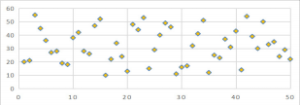 Figure 5 Scatter plot of thermal insulation nail spacing
Figure 5 Scatter plot of thermal insulation nail spacing
② Strengthen the disclosure, check the technical disclosure records, team construction technology disclosure, lack of legends and diagrams, according to the survey 60% lack of necessary diagrams, resulting in 35% of workers who do not understand the technical disclosure book; through technical analysis, only 25% of the projects carried out detailed in-depth design of the construction drawings, and issued the construction technical disclosure book according to this, which is also an aspect that affects the quality of thermal insulation.
③ The bonding of the thermal insulation materials is not strong; through on-site investigation, it was found that there are several places where the bonding between the thermal insulation materials is not strong, resulting in the corresponding position, the thermal insulation cotton is packed and falling off.
④ Through on-site investigation, there is improper protection of the finished product and secondary damage on site. At the same time, there are individual cases where the surface of the iron sheet air duct is uneven, resulting in the thermal insulation material and the surface of the air duct cannot be closely attached together, resulting in the thermal insulation cotton, the outer surface bonding degree is low, and the thermal insulation is easy to pack and fall off.
⑤ In order to meet the requirements of the construction period, it is necessary to overcome the situation of narrow space operation and cross-operation, and ensure that the quality of aluminum foil centrifugal glass wool board air duct insulation is qualified. The key is to control the bonding quality of the insulation nails and ensure that the bonding of the insulation nails meets the acceptance standards. The shedding rate of the insulation cotton in the air duct is less than 3%.
4 Aluminum foil glass wool board process and construction points
4.1 Process flow, aluminum foil centrifugal glass wool: pick material → blanking → sticking thermal insulation nails → covering thermal insulation material → covering thermal insulation sheet → glass wool board blanking edge, corner sticking aluminum foil tape → inspection [3]. 4.2 Construction points ① After the aluminum foil centrifugal glass wool board enters the field, it should be properly stored, stored in a dry environment, and cannot be placed in a place with moisture and dust. Before thermal insulation (before sticking nails), wipe the dust and oil on the air duct with cotton silk or rag (as shown in Figure 6 to Figure 8), and keep it dry. Apply the adhesive to the bonding surface of the pipe wall respectively. After the thermal insulation nails are firmly pasted, the thermal insulation board will be covered later. Under normal circumstances, after the thermal insulation nails are pasted, leave them for 24h. After the thermal insulation glue is dry and the thermal insulation nails are firm, the aluminum foil glass panel will be laid.
Figure 6 Photo before wiping the air duct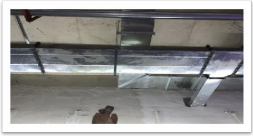
Figure 7 Photo of the wiping process of the air duct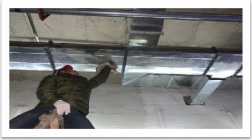
Figure 8 Photo after wiping the air duct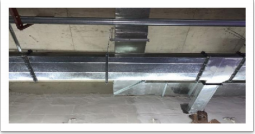
② The insulation board material should be accurately cut, the cutting surface should be flush, and the horizontal and vertical surfaces should be aligned when cutting. The coverage of the insulation board material should be vertical and horizontal, and the seams should be staggered. Small pieces of insulation board material should be covered on the horizontal surface as much as possible, and the splicing joints should be tight and squeezed.
③ The glue should be evenly applied, the bonding should be firm, and the connection should be tight. The width of the lap should be uniform, preferably 3~ 5mm, and the tightness should be moderate. The air duct insulation shell should be flat and one line at the four corners. The air duct insulation board is in close contact and has a beautiful appearance. After the insulation is completed, check carefully, check by layer system and part, and solve the problem in time.
④ When the air duct insulation material is fixed with thermal insulation nails, the following provisions should be met: the connection between the thermal insulation nails and the air duct, components and equipment surfaces should be bonded or welded, and the bonding should be firm and should not fall off; no blind rivets or self-tapping screws should be used to destroy the tightness of the air duct.
⑤ The thermal insulation nails on the surface of the rectangular air duct and equipment should be evenly distributed, and the number of thermal insulation nails should be in line with: thermal insulation nails according to the “Ventilation and Air Conditioning Engineering Construction Quality Acceptance Code” [4] Quantity: The thermal insulation nails of the air duct should be pasted not less than 16 /m2 on the bottom surface, side
10 pieces/m2. For the top surface, it is 8 pieces/m2. The distance from the first row to the edge of the air duct or insulation material should be less than 120mm (as shown in Figure 9).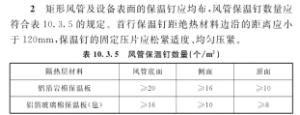
Figure 9 Requirements for the number of sticky nails in “Code for Acceptance of Construction Quality of Ventilation and Air Conditioning Works”
(6) The joint bonding of thermal insulation materials is not strong: adhesive tape should be used to seal, the width of the tape should not be less than 50mm, and it should be firmly pasted on the moisture-proof surface layer, and there should be no expansion and cracking.
Or fall off; The degree of engagement between the thermal insulation material and the outer surface of the air duct: it should be tightly fitted, without cracks, voids and other defects, and the vertical and horizontal joints should be staggered. The thermal insulation layer should be fully laid, the surface should be flat, and there should be no cracks, voids and other defects. When using coils or plates, the allowable deviation should be 5mm.
The insulation engineering construction of air-conditioning equipment, air ducts and their components should be carried out after the air duct and system tightness inspection has passed; during the insulation engineering construction, measures such as fire prevention and rain prevention should be taken, and corresponding environmental protection and labor protection measures should be taken.
The installation quality of the air duct and components meets the design and specification requirements [5]. The construction of the air duct, components and equipment insulation engineering should be carried out after the air leakage and light leakage test of the air duct system has passed and the quality inspection has passed. The longitudinal seams of thermal insulation materials should not be set on the bottom of the air duct. Damaged aluminum foil centrifugal glass wool boards shall not be used.
The anti-corrosion part of the air duct has been painted well [6], and the aluminum foil surface is its moisture-proof layer. The thermal insulation and moisture-proof layer of the air duct and the pipeline (including the end of the thermal insulation layer) should be complete and well closed. The longitudinal seam of the horizontal pipe should be located on the side of the pipe and should be set in the direction of water flow; the splicing joint with the moisture-proof layer insulation material should be glued, the tape should be sealed tightly, and the width of the adhesive tape on both sides of the joint should not be less than 20mm. The tape should be firmly adhered to the moisture-proof layer, and there should be no expansion or falling off.
5 targeted measures
5.1 insulation nail installation construction density is not enough, insulation nail paste uneven, the site construction process in strict accordance with the requirements of the specification. Quantity: 16 /m2 on the bottom surface, 10 /m2 on the side, and 8 /m2 on the top. Add insulation nails to the iron duct with insufficient density on the ground, side and top. And increase the inspection efforts, especially, the location of the blind spot.
5.2 Missing legends and diagrams for team technical disclosure
It is necessary to carry out in-depth design of drawings, add legends and diagrams, and technical disclosure to meet the requirements. Conduct centralized operation disclosure for the on-site construction workers of this process; the content of the technical disclosure book is detailed, and pictures are attached, which is easy to understand and meets the on-site and personnel construction requirements. Corresponding disciplinary measures can even be adopted for teams that are not strictly implemented.
5.3 For the poor bonding of the joints of the thermal insulation materials, the on-site construction process is strictly implemented in accordance with the requirements of the specifications; the adhesive tape is sealed, the width is not less than 50mm, and the moisture-proof surface layer is firmly adhered, and it must not expand and fall off. During the construction process, focus on the investigation of the joints of the thermal insulation materials, and strictly implement the standards。
5.4 Imperfect protection measures for finished products
Add a finished product protection sign to the air duct that has been insulated; the product remains as it is without displacement or deformation. Management personnel strengthen on-site inspection to avoid damage to the finished product and nearby construction personnel.
5.5 The problem of insufficient surface engagement of the air duct
The on-site construction process is carried out in strict accordance with the requirements of the specification, so that the material and the air duct are closely fitted, without cracks and voids. The surface oil removal and cleaning treatment should be carried out before the galvanized air duct is insulated. The on-site stacking of thermal insulation materials must have waterproof measures. Store in the warehouse as much as possible or cover it with waterproof materials and overhead it from the ground. Bonding glue and other thermal insulation materials should be placed in the warehouse. The thermal insulation materials should be used reasonably and save materials as much as possible. The remaining materials should be brought back to the warehouse in time for storage or stacked in a place that does not affect the construction to prevent loss and damage.
5.6 Insulation for narrow spaces
① Before installing the air duct, it is necessary to communicate with electrical majors, fire protection majors, decoration majors, civil engineering majors, water supply and drainage majors, and weak electricity majors to ensure that the installation space of the air duct contains thermal insulation.
② The thermal insulation of the air duct is carried out after the installation of the air duct is completed and the tightness inspection is qualified. During the period from the installation of the air duct to the insulation, if there are other specialties for cross-operation, at least the thermal insulation capacity of the air duct should be set aside for the electrical wire pipe, fire pipe, etc. Generally, the engineering smoke prevention and exhaust system uses δ = 50mm aluminum foil centrifugal glass wool board for insulation, and the fresh air system and air conditioning system use δ = 30mm aluminum foil centrifugal glass wool board for insulation.
③ The installation of electrical wire pipes and fire pipes cannot be laid close to the air duct. After the air duct is connected with the side out trend, there is at least 50mm spacing between the lower edge of the trend and the top plate of the gypsum board to ensure that the distance between the auxiliary bone and the bottom edge of the air duct has enough insulation.
④ If the distance between the air duct and the ceiling is very narrow, the air duct can be slightly raised, and then heated. After the heat preservation, the sub-keel can be installed. The sub-keel can be next to
Wear the aluminum foil surface, but do not press the aluminum foil surface too tightly, causing the aluminum foil to be damaged.
6 Conclusion
If the quality control of air duct insulation is not good, condensate is formed on the air duct and equipment, which affects the safety of equipment operation; if the quality control of air duct insulation is not good, it is easy to cause energy, waste, and affect the cooling and heating effect of indoor rooms; at the same time, the appearance quality is poor, and the centrifugal glass wool will gradually fall from the damaged place, affecting the living environment. The quality of air duct insulation is an important control point of engineering quality, and it is an important part of engineering quality management and the creation of high-quality projects. The thermal insulation construction of air duct must ensure quality assurance and be completed.
We focus on the research and development as well as manufacturing
of thermal insulation materials and sealing materials.